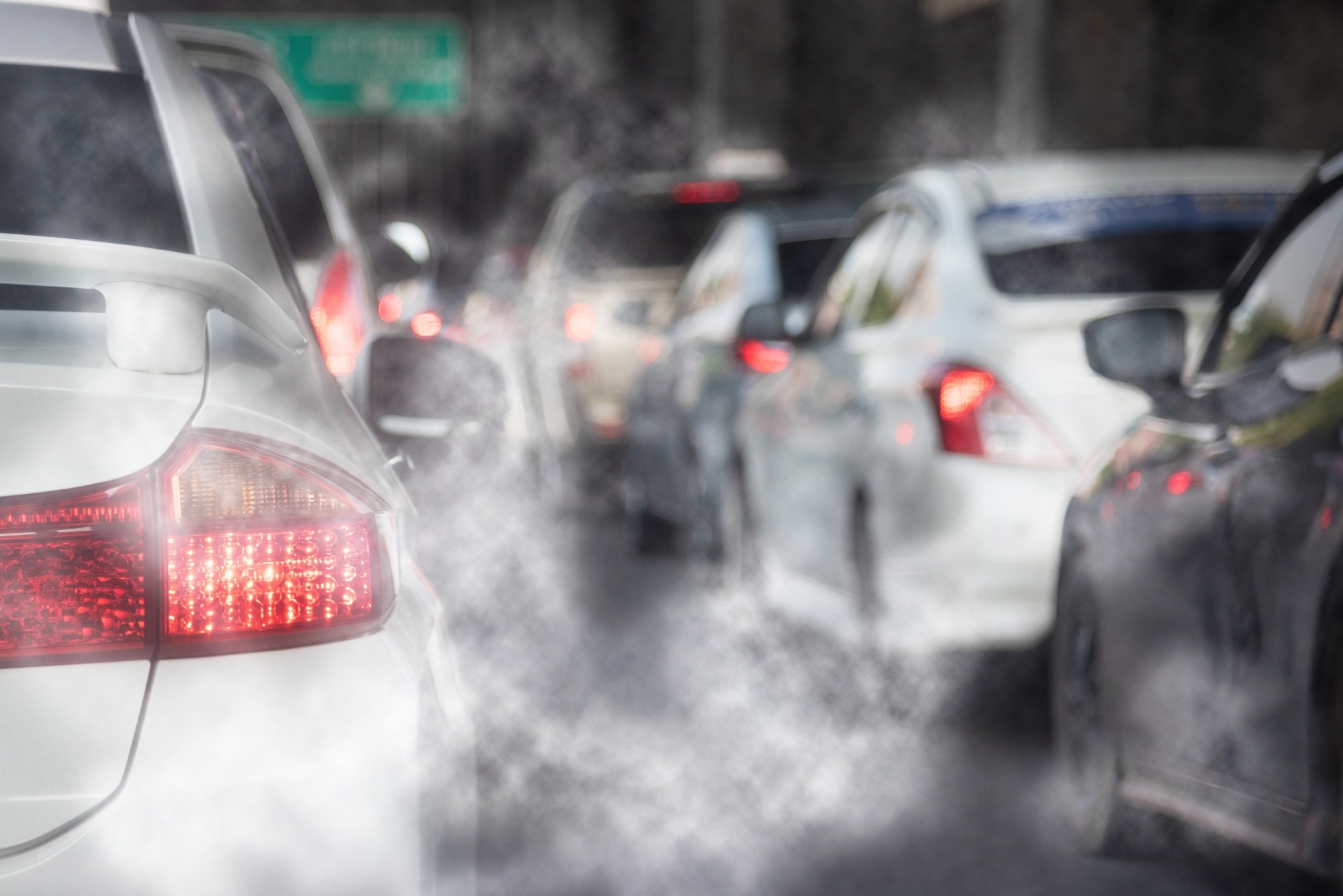 By Pooja Toshniwal PahariaReviewed by Sarah KellyOct 10 2025
By Pooja Toshniwal PahariaReviewed by Sarah KellyOct 10 2025Researchers have found that inhaled traffic-related particulate matter (PM) can attach to red blood cells (RBCs) and travel through the bloodstream, revealing a potential route for systemic exposure. The effects of this can be mitigated by wearing FFP2 masks, reinforcing the value of protective measures against air pollution.
 Study: Adherence of traffic-related particles to human red blood cells in vivo. Image Credit khunkornStudio/Shutterstock.com
Study: Adherence of traffic-related particles to human red blood cells in vivo. Image Credit khunkornStudio/Shutterstock.com
Traffic-related particulate matter (PM) refers to a complex mixture of emissions from exhaust, brakes, and tires, materials known to affect multiple organs, including the lungs. A proposed mechanism suggests that ultrafine, metal-bearing particles may enter the bloodstream by binding to red blood cells, eventually reaching the brain and heart in animal models.
One plausible route for this systemic transport is ‘RBC hitchhiking’, wherein inhaled particles adhere to circulating RBCs. Animal studies indicate that such adhesion can deform RBCs, increase their vulnerability to stress, and facilitate the transfer of particulates to endothelial cells lining capillaries, ultimately amplifying systemic exposure and potential toxicity.
About the Study
Building on this concept, the researchers investigated whether inhaled traffic-associated PM adheres to RBCs for further distribution in the human body, and examined whether FFP2 masks reduce this adherence.
Twelve healthy, non-smoking adults with a median age of 39 years participated in the study from May to August 2024 in London. Each participant was exposed to traffic-associated PM emissions for one hour within 10 meters of a major roadway, followed by one hour in an air-conditioned office. On a separate day, exposure was repeated while the participants wore an FFP2 mask.
Blood samples were collected at three time points: baseline (after four hours indoors), immediately post-exposure, and one hour after returning indoors.
Black carbon particle exposure was quantified using a portable aethalometer. Light microscopy determined the mean surface area (μm2) of carbonaceous particulate matter adhered to RBCs, examining 3000 cells per sample.To determine the particles' morphology and composition, researchers used energy-dispersive X-ray spectroscopes (EDX) and scanning transmission electron microscopes (STEM), identifying RBCs by their characteristic discoid shape.
To validate in vivo findings, the team conducted additional in vitro and animal experiments. Human-derived RBCs were expoed to diesel exhaust particles (DEPs) to assess adherence patterns. Meanwhile, female C57Bl6 mice received an intratracheal installation of DEP suspension (50 μL, 1.0 mg/mL) under isoflurane anesthesia. The researchers sampled blood via the tail vein at baseline, five minutes, 30 minutes, 60 minutes, and 24 hours post-instillation.
Using high-angle annular dark field (HAADF)-STEM and EDX, the team confirmed the nanoscale structure, morphology, and elemental composition of RBC-associated particles, verifying them as traffic-derived matter.
Results
Inhaling traffic-associated emissions resulted in measurable adherence of particulate matter to RBCs, supporting the hypothesis that inhaled PM can enter systemic circulation via RBC binding. In adult volunteers, standing within 10 meters of a main roadway for one hour significantly increased black carbon exposure (median, 1806 ng/m3/minute versus 229 ng/m3/minute at baseline).
Following exposure, irregular carbonaceous particles were consistently observed on RBC surfaces. The mean area of adherent PM per RBC increased markedly from 2.3 × 10-3 μm2/RBC at baseline, to 8.0 × 10-4 μm2/RBC post-exposure. This increase persisted for one hour after re-entering the indoor setting.
Similarly, exposure increased the count of adherent PM particles per 3000 RBCs, with the median increasing from 5.5 vs. 12. A strong positive correlation was found between personal exposure to black carbon and the PM-occupied RBC area, indicating that higher airborne PM levels directly translated to a greater systemic particle load.
Importantly, FFP2 mask-wearing during exposure significantly reduced the PM-RBC area (2.3 × 10-3 μm2/RBC vs. 8.4 × 10-4 μm2/RBC without a mask), demonstrating the protective efficacy of respiratory filtration against internal exposure to particulate matter.
Electron microscopy revealed metal-containing nanoparticles, measuring from ~ 3 to 125 nm, attached to the surface of RBCs, often clustering along the cell edges. EDX identified elemental compositions consistent with traffic-derived PM, including silicon, iron, copper, and silver, with additional trace elements such as titanium, chromium, and nickel.
In vitro, DEP attachment to human RBCs increased in a dose-dependent manner, with a significant increase in particle area and count at concentrations ≥1.0 µg/mL. In mice, the team observed similar carbonaceous particles on RBCs 30–60 minutes after the intratracheal insertion of DEPs, with particle morphology resembling that of human samples.
Conclusions
The study provides the first in vivo evidence that traffic-related particulate matter adheres to red blood cells, enabling systemic transport. The degree of RBC-bound PM correlated strongly with black carbon exposure, linking inhaled particle load to internal exposure. FFP2 masks significantly reduced adherence, demonstrating an effective personal protection strategy.
Beyond its immediate findings, the research highlights the potential of RBC-bound particles as biomarkers of internal PM exposure. These findings also emphasize the necessity for tighter regulation of urban particulate emissions. Further research should investigate how these RBC-associated particles circulate, interact with tissues, and contribute to broader health effects.
Journal reference
Grigg J, et al. (2025). Adherence of traffic-related particles to human red blood cells in vivo. ERJ Open Res., 00767-2025; DOI: 10.1183/23120541.00767-2025. https://publications.ersnet.org/content/erjor/early/2025/09/04/2312054100767-2025